


xxxxxThe
term “Gilbert and Sullivan” refers to the 14 highly successful comic
operas written by W.S. Gilbert and composed by Arthur
Sullivan for the London stage between 1875
and 1896. Loved for their tuneful melodies, witty dialogue and
absurd but amusing plots, they poked fun at the government, the
armed forces, the aesthetic movement, and Britain’s class-
GILBERT AND SULLIVAN (Vc)
WILLIAM SCHWENCK GILBERT
1836 -
ARTHUR SEYMOUR SULLIVAN
1842 -
Acknowledgements
Gilbert: detail,
by the English portrait painter Frank Hol (1845-
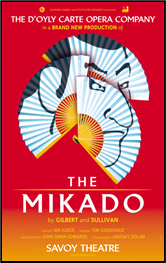 xxxxxThe term “Gilbert and
Sullivan” refers to the series of fourteen comic, light-
xxxxxThe term “Gilbert and
Sullivan” refers to the series of fourteen comic, light-
xxxxxThexpartnership was brought about by Richard
D’Oyly Carte (1844-
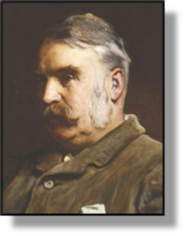
xxxxxThe English
humorist and satirist W.S.Gilbert was the son of a naval surgeon, and in his early
years he travelled around Europe with his parents. He started his
schooling in Boulogne, but completed his education in London,
graduating from King’s College in 1856. For four years he worked
as a civil servant, and then briefly as a barrister, but he had no
liking for either career, and turned to full-
xxxxxParticularly
successful at this time were the pantomimes Hush-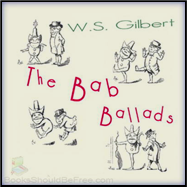 name
Bab, and published in 1869 and 1873, also proved extremely
popular. Well illustrated with his own comic drawings, these Bab Ballads -
name
Bab, and published in 1869 and 1873, also proved extremely
popular. Well illustrated with his own comic drawings, these Bab Ballads -
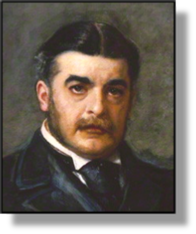 xxxxxArthur Sullivan was born in
Lambeth, south London. His formative musical training was gleaned
from his father, a military bandmaster and clarinet teacher, and
from serving as a choirboy at the Chapel Royal in his early teens.
In 1856 he won the Mendelssohn Scholarship, and this gained him
entrance to the Royal Academy of Music. He studied there for two
years and then spent a further year at Leipzig Conservatory,
where, amongst others, he met the Hungarian composer Franz Liszt
and the Austro-
xxxxxArthur Sullivan was born in
Lambeth, south London. His formative musical training was gleaned
from his father, a military bandmaster and clarinet teacher, and
from serving as a choirboy at the Chapel Royal in his early teens.
In 1856 he won the Mendelssohn Scholarship, and this gained him
entrance to the Royal Academy of Music. He studied there for two
years and then spent a further year at Leipzig Conservatory,
where, amongst others, he met the Hungarian composer Franz Liszt
and the Austro-
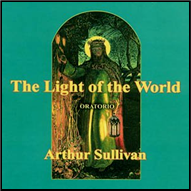 xxxxxOver the next fifteen, while working as a church
organist and giving private piano and singing lessons, he composed
a wealth of orchestral works, oratorios, cantatas, hymns, songs,
and piano pieces, mostly in the style of Mendelssohn. Notable
among these were his choral and orchestral work The
Masque at Kenilworth, his Irish Symphony, his Concerto
for Cello and Orchestra, his Overture
in C (composed on the death of his father), and two
oratorios, The Prodigal Son and The Light of the World. He wrote incidental
music for a number of plays, including The
Merchant of Venice and The Merry
Wives of Windsor, and among his seventy plus hymns were Onward Christian Soldiers and Nearer
My God to Thee. Also worthy of note are his song cycle The Window, or The
Songs of the Wrens, composed in collaboration with the
English poet Alfred Tennyson, and his famous ballad The
Lost Chord. His first attempt at opera, The
Sapphire Necklace, proved a failure, but his Cox
and Box, composed in 1866, went on to achieve outstanding
success at the Royal Gallery of Illustrations, and it was this
work, as already noted, which caught the attention of Richard
D’Oyly Carte and brought about the famous partnership.
xxxxxOver the next fifteen, while working as a church
organist and giving private piano and singing lessons, he composed
a wealth of orchestral works, oratorios, cantatas, hymns, songs,
and piano pieces, mostly in the style of Mendelssohn. Notable
among these were his choral and orchestral work The
Masque at Kenilworth, his Irish Symphony, his Concerto
for Cello and Orchestra, his Overture
in C (composed on the death of his father), and two
oratorios, The Prodigal Son and The Light of the World. He wrote incidental
music for a number of plays, including The
Merchant of Venice and The Merry
Wives of Windsor, and among his seventy plus hymns were Onward Christian Soldiers and Nearer
My God to Thee. Also worthy of note are his song cycle The Window, or The
Songs of the Wrens, composed in collaboration with the
English poet Alfred Tennyson, and his famous ballad The
Lost Chord. His first attempt at opera, The
Sapphire Necklace, proved a failure, but his Cox
and Box, composed in 1866, went on to achieve outstanding
success at the Royal Gallery of Illustrations, and it was this
work, as already noted, which caught the attention of Richard
D’Oyly Carte and brought about the famous partnership.
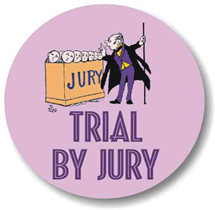
xxxxxGilbert and Sullivan had worked together some years earlier on the production of Thespis, a Christmas play, but this had met with a disappointing response. Trial by Jury, produced in March 1875 was quite a different matter, and was to lead to one of the most successful musical partnerships of all time. Over the next twenty years, by his tuneful melodies and his inventive musical settings, Sullivan was to show a remarkable, uncanny talent to complement and embellish Gilbert’s clever rhymes, sparkling wit, and comic plots. Together they achieved, in the words of the famous conductor Henry Wood, “a rare harmony of words and music”.
xxxxxBut this harmony did not extend to their personal relationship. Whilst Gilbert was known for his kindly acts, he was, on the surface, a prickly individual who was quick to react to criticism. Sullivan, on the other hand, was a quiet man who avoided open conflict and tended to make his views known on paper. They did not particularly like each other.
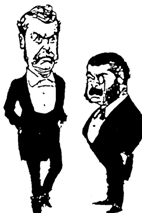 xxxxxThe main disagreement between the two centred around
Sullivan’s constant concern that, as a talented composer, he was
not making enough of his musical ability. Whilst Gilbert -
xxxxxThe main disagreement between the two centred around
Sullivan’s constant concern that, as a talented composer, he was
not making enough of his musical ability. Whilst Gilbert -
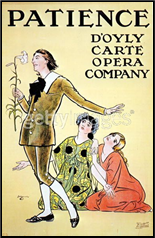
xxxxxAmong the fourteen operas produced by Gilbert and Sullivan there was a small number of failures. The Sorcerer of 1877, for example, was not well received, and Ruddigore, ten years later, failed to attract a large audience, but eight of them were immensely successful and are produced to this day. The one act opera Trial by Jury was a spoof on the legal profession, and proved so popular that Carte promptly set up his own company to promote further productions. HMS Pinafore followed in 1878. This nautical theme gently poked fun at the Royal Navy and the English obsession with social status, and the set characters it created reappeared in different guises in most of the subsequent operas. It proved highly successful. The colourful Pirates of Penzance, an amusing tale about law and order, was produced the following year and opened in New York. Patience followed in 1881, a gentle but nonetheless cogent satire on the aesthetic movement of that time, led by the likes of the English poets Swinburne and Rossetti. It was while Patience was running that Carte opened his Savoy Theatre in the Strand, built expressly for the comic operas of Gilbert and Sullivan.
 xxxxxThe “Savoy Operas”, as they then came to be known,
continued with Iolanthe in 1882, a
fairy story that takes a not too gentle swipe at the House of
Lords and the Establishment in general. It was soon after this
that Sullivan was knighted and this brought about renewed calls
from the critics, urging him to return to “serious music”. A
musical knight, commented one, must not soil his hands by writing
“shop ballads”. 1885 saw the first performance of The
Mikado, one of the most successful of the Gilbert and
Sullivan productions. Set in Japan and making the most of its
exotic location, it was, in fact, an ill-
xxxxxThe “Savoy Operas”, as they then came to be known,
continued with Iolanthe in 1882, a
fairy story that takes a not too gentle swipe at the House of
Lords and the Establishment in general. It was soon after this
that Sullivan was knighted and this brought about renewed calls
from the critics, urging him to return to “serious music”. A
musical knight, commented one, must not soil his hands by writing
“shop ballads”. 1885 saw the first performance of The
Mikado, one of the most successful of the Gilbert and
Sullivan productions. Set in Japan and making the most of its
exotic location, it was, in fact, an ill-
Vc-
xxxxxThe
famous American bandmaster and composer John
Philip Sousa (1854-
 xxxxxA famous American musician and composer who
particularly liked The Mikado -
xxxxxA famous American musician and composer who
particularly liked The Mikado -
xxxxxToday, however, Sousa is remembered above all as an outstanding bandmaster. He composed no less than 136 marches, and their lively, rousing tunes earned him the title “The March King”. Among the best known marches are Semper Fidelis, The Washington Post, The Liberty Bell, Stars and Stripes for Ever, and Hands Across the Sea. He wrote music, he said “for the feet instead of the head”, and he certainly succeeded in his aim.
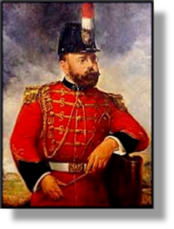
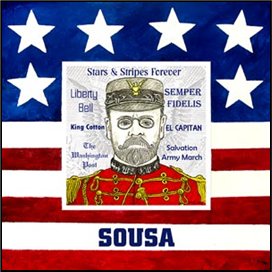 xxxxxSousa was born in Washington, D.C, and began his
musical career at the age of 13, when he was apprenticed to the
Marine Band, the President’s official band. He became an orchestra
violinist from the age of 18, but in 1880 he was appointed
bandmaster of the US Marine Corps, and it was then that he showed
his rare ability at the composing of tuneful, stirring marches. He
formed his own Sousa Band in 1892, and his music then became
hugely popular during extensive tours of the United States, Europe
and Australia. During the First World War he served as the
director of the Navy Band, and after the war he wore his naval
uniform for most of his public appearances. In 1929 he began
making radio broadcasts, and these added to his reputation. His
autobiography, published in 1928, was aptly entitled Marching
Along. He died of heart failure at the age of 77 while
staying in a hotel in Reading, Pennsylvania, and was buried in
Washington’s Congressional Cemetery.
xxxxxSousa was born in Washington, D.C, and began his
musical career at the age of 13, when he was apprenticed to the
Marine Band, the President’s official band. He became an orchestra
violinist from the age of 18, but in 1880 he was appointed
bandmaster of the US Marine Corps, and it was then that he showed
his rare ability at the composing of tuneful, stirring marches. He
formed his own Sousa Band in 1892, and his music then became
hugely popular during extensive tours of the United States, Europe
and Australia. During the First World War he served as the
director of the Navy Band, and after the war he wore his naval
uniform for most of his public appearances. In 1929 he began
making radio broadcasts, and these added to his reputation. His
autobiography, published in 1928, was aptly entitled Marching
Along. He died of heart failure at the age of 77 while
staying in a hotel in Reading, Pennsylvania, and was buried in
Washington’s Congressional Cemetery.
xxxxxIncidentally, Sousa led the President’s own band for no less than five presidents, and his band played at two presidential inaugural balls. In 1893 the “sousaphone”, a kind of large tuba, was expressly made for his band by an instrument maker in Philadelphia, and the instrument was improved upon five years later. ……
xxxxx…… His exuberant The Washington
Post, composed in 1889 was written for a competition
organised by the newspaper The Washington Post,
hence its name. It was an immediate worldwide success, especially
because it was synonymous with the two-
Including:
John Philip Sousa
and Scott Joplin

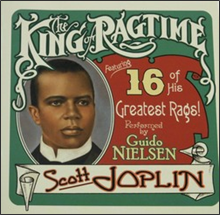 xxxxxAnd another American who got people’s feet tapping at
this time was the pianist, cornet player and composer Scott Joplin (c1867-
xxxxxAnd another American who got people’s feet tapping at
this time was the pianist, cornet player and composer Scott Joplin (c1867-
xxxxxRag music or Jazz, as it is now called, evolved from the folk music of the black American slaves, and Joplin, born near Texarkana, Texas, was himself the son of a former slave. He worked for some years as a travelling musician, and first came to prominence at the Chicago World Fair of 1893, when his small band, playing a number of his own compositions, attracted a large audience and made ragtime music a national craze. One newspaper, the St. Louis Dispatch, described it as a “call of the wild” which “mightily stirred the pulses of city bred people”.
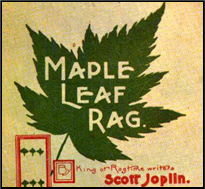 xxxxxFollowing the success of Maple
Leaf Rag, Joplin established his own Ragtime Opera
Company in 1903, and settled in New York four years later. His two
operas, A Guest of Honour (since lost)
and Treemonisa were not successful, but
his 44 ragtime pieces, such as The Entertainer, Pine Apple
Ra
xxxxxFollowing the success of Maple
Leaf Rag, Joplin established his own Ragtime Opera
Company in 1903, and settled in New York four years later. His two
operas, A Guest of Honour (since lost)
and Treemonisa were not successful, but
his 44 ragtime pieces, such as The Entertainer, Pine Apple
Ra g
and Wall Street Rag, created a new kind
of sound and ushered in the Age of Jazz. Sadly, by 1916 he was
suffering both physically and mentally from the increasing effects
of syphilis. He died in a mental hospital in New York the
following year.
g
and Wall Street Rag, created a new kind
of sound and ushered in the Age of Jazz. Sadly, by 1916 he was
suffering both physically and mentally from the increasing effects
of syphilis. He died in a mental hospital in New York the
following year.
xxxxxAnother
American musician at this time who got people’s feet tapping was the
pianist and composer Scott Joplin (c1867-
xxxxxBut the Gondoliers was their last great success. It
was at this time that a dispute arose between Gilbert and Carte
over the cost of a carpet for the Savoy Theatre. Gilbert argued
that this should not be paid for by the partnership, and this soon
led to questions being raised about Carte’s general handling of
the company’s financial affairs. Sullivan supported Carte -
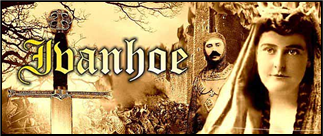 xxxxxAmong Sullivan’s later works were the cantata The Golden Legend, incidental music to
Shakespeare’s Macbeth, his grand opera
Ivanhoe, and music for Tennyson’s The Foresters. In 1883 he was knighted for
his services to “serious music”. After the break up with Gilbert,
his works included a popular song The Absent
Minded Beggar, based on a text by Rudyard Kipling, the
comic opera The Rose of Persia, the
ballet Victoria and Merrie England, and
a Te Deum to mark the end of the Boer
War, though he did not live to see it performed. He died of heart
failure in November 1900 and, by order of the Queen, was buried in
St. Paul’s Cathedral. As a composer of serious music he produced a
number of notable works, but the public at large will always
associate him with the music he produced for the Savoy operas, and
it is there that his fame resides.
xxxxxAmong Sullivan’s later works were the cantata The Golden Legend, incidental music to
Shakespeare’s Macbeth, his grand opera
Ivanhoe, and music for Tennyson’s The Foresters. In 1883 he was knighted for
his services to “serious music”. After the break up with Gilbert,
his works included a popular song The Absent
Minded Beggar, based on a text by Rudyard Kipling, the
comic opera The Rose of Persia, the
ballet Victoria and Merrie England, and
a Te Deum to mark the end of the Boer
War, though he did not live to see it performed. He died of heart
failure in November 1900 and, by order of the Queen, was buried in
St. Paul’s Cathedral. As a composer of serious music he produced a
number of notable works, but the public at large will always
associate him with the music he produced for the Savoy operas, and
it is there that his fame resides.
xxxxxAfter the end of the partnership, Gilbert collaborated with a number of other English composers, including Fallen Fairies with Edward German Reed in 1909, but they made little impact with the public. However, his last work, The Hooligan, a marked departure from his comic parodies, was well received. A drama about a young prisoner awaiting execution, it was inspired by the arrest of the murderer Doctor Crippen in 1910.
xxxxxGilbert was
knighted for his services to drama in 1907 during the reign of
Edward VII -
xxxxxIncidentally, a memorial to Sullivan, erected in the Victorian Embankment Gardens, London, is inscribed with words from The Yeomen of the Guard: Is life a boon? If so, it must befall that Death, whenever he calls, must call too soon. ……
xxxxx……xxGilbert’s ashes were buried at the Church of St. John the Evangelist in Stanmore. The inscription on the memorial plaque reads: His Foe was Folly, and his Weapon Wit. ……
xxxxx……xxMany sayings from the Savoy operas have come into general usage, including: Let the punishment fit the crime, A policeman’s lot is not a happy one, I’ve got a little list, they’d none of ‘em be missed, What never? Well hardly ever, and short sharp shock. ……
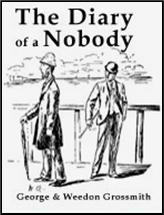
xxxxx……xxThexEnglish
actor and singer George Grossmith (1847-



